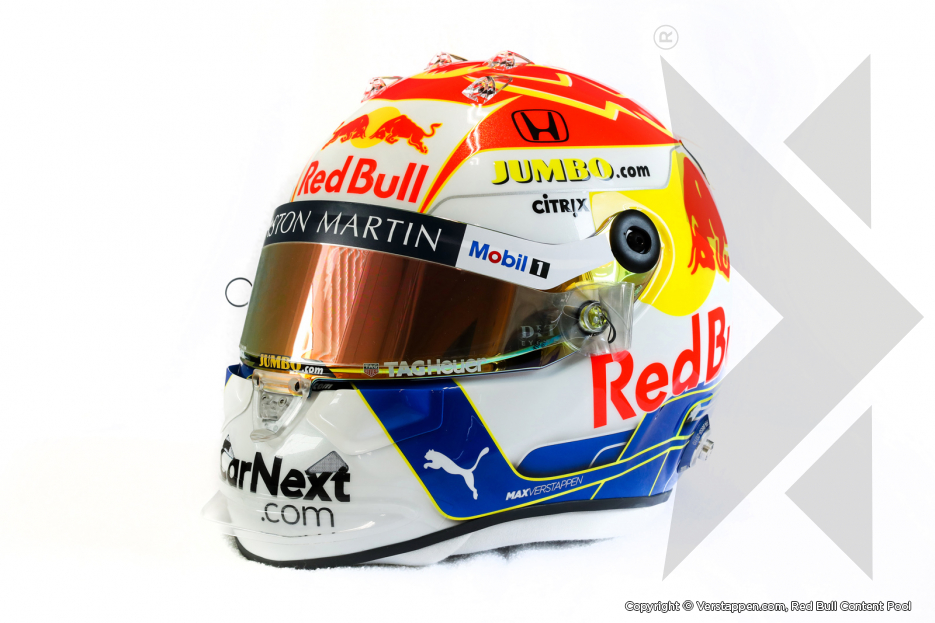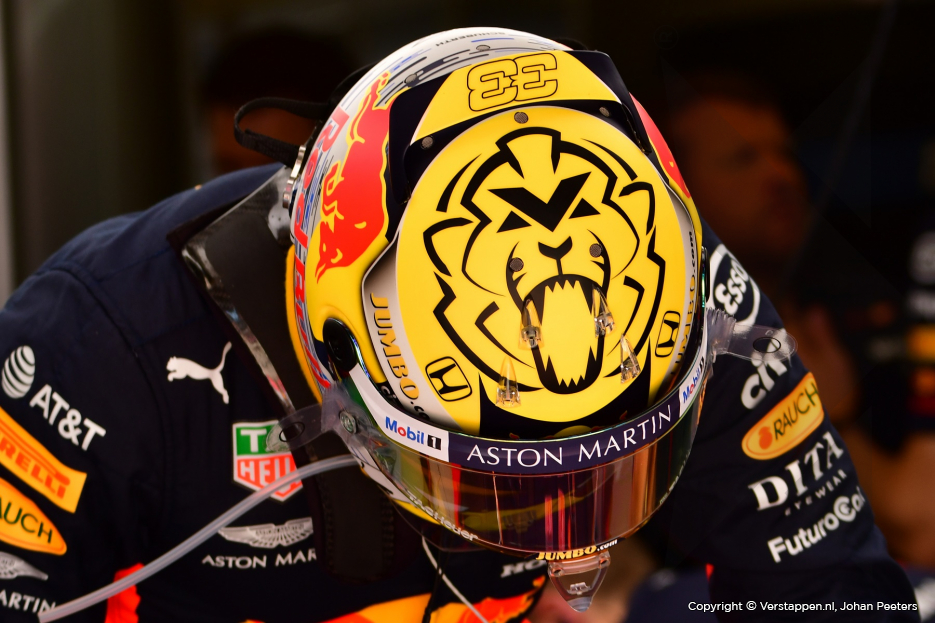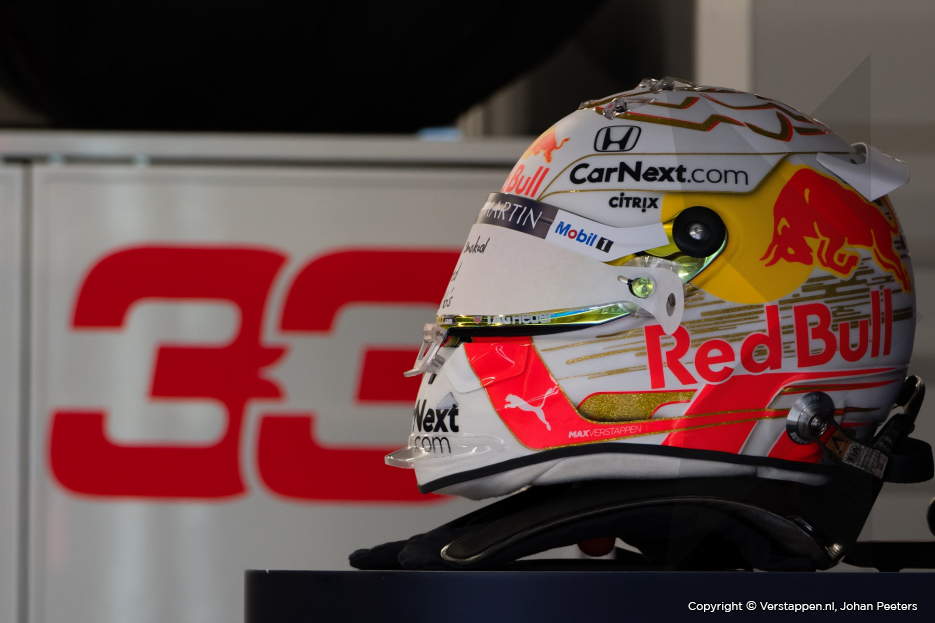Helmets in Formula 1
Published on 31 October 2020 by Johan Peeters
At the dawn of the World Championship era, the concept of head protection for a Formula One driver extended to a leather cap and goggles. It’s reasonable to say that, over the last seventy years, the science has moved on a bit. The leather caps were soon superseded by cork-stripped caps with a fabric cover. These in turn gave way to fibreglass open-face helmets – and then full face helmets.
At the start of this century, carbon composites became the construction material of choice, with the standards even increasing through the addition of Kevlar inners, Zylon plates and a hundred other minor tweaks and adjustments designed to push the boundaries of safety just that little bit further ever year – though this tends to be difficult to spot beneath the custom paintwork.
Like much in F1, the high-tech nature of helmets doesn't necessarily imply computerised manufacturing. F1 helmets are hand-made by highly skilled professionals, frequently operating out of tiny workshops.
Constructed from carbon composite layers, making a complete helmet may take two or three people, working a full day – which limits the output of top-of-the-line helmets to hundreds rather than thousands for the manufacturers like Schuberth, Stilo, Bell and Arai that work in F1. The finished helmet has a lot take on. The latest FIA 8860-2018 standard, subjects it to a medieval torture-chamber’s worth of tests: crush tests with a 10kg weight falling 5m onto the helmet; penetration tests with high-speed 4k impactors (shell) or air rifle pellets (visor); a ballistic test that fires a 225g steel disc at 250km/h at the helmet; being passed through a 790°C flame without catching fire.
Drivers draw inspiration from many sources for their helmet design. National colours obviously dominate – but because drivers tend to choose their basic liveries in their teenage years, everything from in-jokes to hero worship can sometimes follow them through a career. In one-off designs it’s often a track- or location-specific element that is prominent. This is the basis for the conversations that the drivers have with their artist.
In the past, Adrian Newey has expressed a strong preference for Arai helmets, and thus it’s an Arai shape the Team uses for its wind tunnel model. Max, however, wears a Schuberth lid. He switched at the beginning of 2019 pre-season testing because Arai did not yet have a helmet homologated to the latest standard in a size he found comfortable. Schuberth did have a helmet in Max’s size homologated to the new and incredibly stringent FIA 8860-2018 standard. Max wore it in testing and opted to stay with the manufacturer subsequently.
 F1 drivers will typically have at-least a prime and a spare helmet in the garage. They may be configured with different visors and vent configurations to cope with differentweather conditions (for instance, different rubber gaskets to seal some of the vents in particularly wet weather) but the reason a driver usually swaps his helmet during a session is to deal with a faulty radio.
F1 drivers will typically have at-least a prime and a spare helmet in the garage. They may be configured with different visors and vent configurations to cope with differentweather conditions (for instance, different rubber gaskets to seal some of the vents in particularly wet weather) but the reason a driver usually swaps his helmet during a session is to deal with a faulty radio.
Over the course of a season, a driver may get through a dozen or more helmets – regardless of whether they’re allowed different liveries or not. Like the other forward-facing surfaces on the car, racing at 300kph+ tends to lead to create various marks and nicks in the (thin) paintwork but unlike the chassis, a helmet can’t be taken away, scraped down and repainted.
Also, driving an F1 car is hot, sweaty work. Even though they wear a balaclava, the soft inner lining of a helmet becomes pretty fragrant after a couple of Grands Prix; think of doing a heavy workout and then accidentally leaving your gym kit in the bag for a couple of weeks…
The helmets are expensive – far more so than a road lid – costing anything between €4,000-€7,000. However, F1 drivers generally do not pay for their kit, with most having sponsorship deals with the various suppliers, delivering them a specified number of helmets each season.
Where do old helmets go? Mostly they go into display cases. Drivers and teams keep favourites, either at home, in the factory, or, for a lucky few, on display in the team’s motorhomes at the track. Others go to sponsors and many end up the subject of furious bidding at charity auctions. The Wings for Life charity has benefitted greatly from Red Bull drivers donating helmets: when Sebastian Vettel’s 2013 German Grand Prix-winning helmet was auctioned at Bonhams, it raised £72,100.




